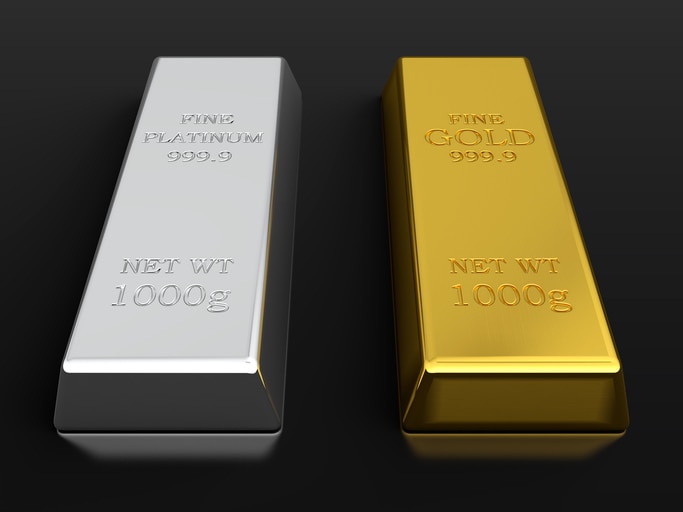Introduction (1)
Platinum is an element with atomic number 78 and is considered a “noble metal”. Platinum metal is an inactive metal and is extremely resistant corrosion making it quite safe for humans, and one of the rarer metals on Earth. It is naturally occurring in the Earth but isn’t found naturally in the human body.

Image from
Uses of platinum include:
- Jewelry
- Medical devices
- Pacemakers
- Joint replacements
- Catalysts in the production of
- Fuel
- Fertilizers
- Hydrogenation of vegetable oil
- Hydrogen peroxide into water
- Electrodes and other electronic parts
- Laboratory equipment
- Platinum complexes are used as an antitumor medication
- Cisplatin
- Carboplatin
- Oxaliplatin
- Transplatin
Toxicokinetics (2)
Elemental Platinum
Elemental platinum is considered to be non-toxic to humans.
Platinum Salts
- The most common method of platinum salts entering the body is by way of inhalation, occasionally some platinum dust might be swallowed.
- Platinum dust is quickly cleared with mucociliary clearance.
- Excreted in feces
- Half-life of 24 hours. This is an extraordinarily short half-life for a metal, as a comparison the table below shows the half-lives of Cadmium, Lead and Mercury throughout the body. These half-lives are measured in years, compared to the hours of platinum.
Table found here
Platinum Complexes
- Intravenous administration
- Distributed with high concentrations found in the kidney, liver, intestine, spleen, and testes. Lacks ability to cross the blood-brain barrier
- Renal excretion with a half-life of about 5 days

Image from
Mechanism of Action
Elemental Platinum
Elemental platinum is non-toxic and therefore does not have a mechanism of action.
Platinum Salts
Platinum salts act as respiratory or skin irritants. They may also trigger a response similar to an allergic reaction.
Platinum Complexes (3)
Platinum complexes are used as cytotoxic treatments of cancer cells. The platinum complexes can react with electron-rich regions in DNA that forms cross-links in the DNA. These cross-links in DNA inhibit replication and transcription of the DNA which eventually leads to apoptosis of the cell.

Image from
Health Effects
Elemental Platinum
- No adverse health effects
- Noncarcinogenic
Platinum Salts
See the full occupational guideline for platinum salts here
- Irritation of the eyes nose throat
- Dermatitis
- Platinosis, an allergic-like reaction
- Blue discoloration of the skin
- Noncarcinogenic
Platinum Complexes (3)
- Neurotoxicity
- Cisplatin may also cause damage to the distal tubular cells in the kidneys
- Considered to be a “probable human carcinogen”
- There was found to be a genetic susceptibility in developing toxicities caused by platinum complexes
- Individuals with the GSTP1 variation fo the Glutathione S-Transferase (GST) genes have been found to be more likely to have adverse neurotoxic responses to platinum complexes.
Treatments
Platinum Salts
Exposure to platinum salts is furthered detailed in the safety guidelines found here.
Protocol includes:
- Washing eyes out
- Rinsing exposed skin
- Exposure to fresh air
Platinum Complexes (4)
No effective treatments have been found for platinum complex induced neurotoxicity, however, medications such as antiepileptics, antidepressants, and antioxidants are being investigated as possible solutions.
Because platinum itself is so nontoxic and unreactive, researchers are using platinum complexes as a method of chemotherapy because he metal platinum will not interfere with any mechanisms already present in the body, or any of the mechanisms of the drugs. More information about the current state of platinum complexes as anti-cancer drugs can be found here.
References
- “Platinum (revised) .” Chemical Elements: From Carbon to Krypton . . Retrieved June 08, 2020 from Encyclopedia.com: https://www.encyclopedia.com/science/news-wires-white-papers-and-books/platinum-revised
- Tokar E.J., & Boyd W.A., & Freedman J.H., & Waalkes M.P. (2013). Toxic effects of metals. Klaassen C.D.(Ed.), Casarett and Doull’s Toxicology: The Basic Science of Poisons, Eighth Edition. McGraw-Hill. https://accesspharmacy-mhmedical-com.proxy.lib.ohio-state.edu/content.aspx?bookid=958§ionid=53483748
- McWhinney, S. R., Goldberg, R. M., & McLeod, H. L. (2009). Platinum neurotoxicity pharmacogenetics. Molecular cancer therapeutics, 8(1), 10–16. https://doi.org/10.1158/1535-7163.MCT-08-0840
- Kanat, O., Ertas, H., & Caner, B. (2017). Platinum-induced neurotoxicity: A review of possible mechanisms. World journal of clinical oncology, 8(4), 329–335. https://doi.org/10.5306/wjco.v8.i4.329
